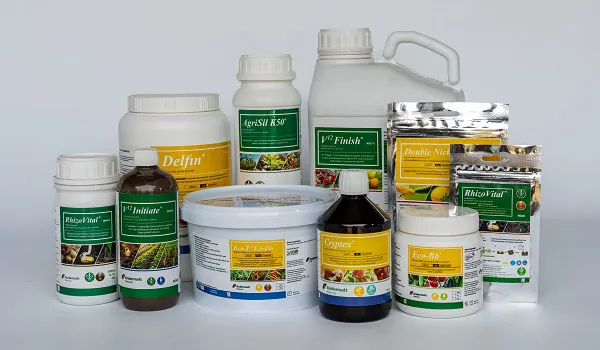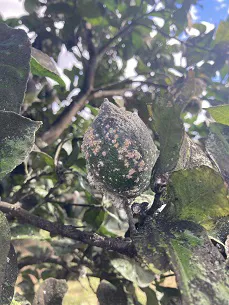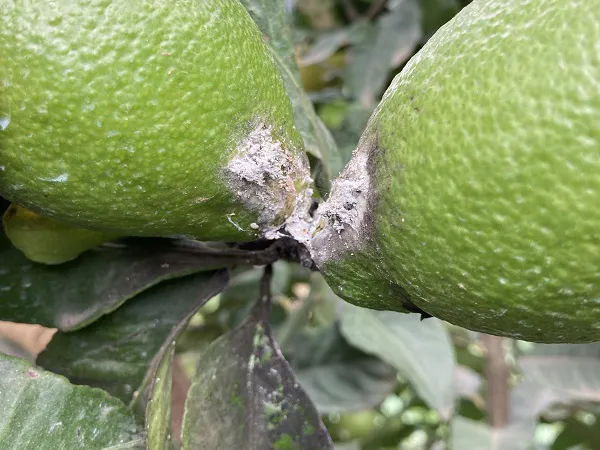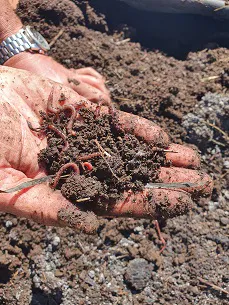Andermatt provides specialized inputs for both the row crop and fruit industries globally, with a focus on integrated pest management principles. Its subsidiary in South Africa is Andermatt Madumbi, which is able to provide the South African market with the exposure of the research and development done on a multinational level to bring precision solutions down to the farmer level, says De Wet Steenkamp, Biospecialist at Andermatt Madumbi.
Andermatt Madumbi believes the industry has to change its focus from the telescopic lens of synthetic chemistry and look through the binocular lens of both synthetic chemistry and the natural life sciences.
 The full range of Andermatt Madumbi biostimulant and root health products (photos supplied by Andermatt Madumbi)
The full range of Andermatt Madumbi biostimulant and root health products (photos supplied by Andermatt Madumbi)
The company has recently appointed Ben Krog as the new commercial lead with the mandate to commercialise their range of biostimulant and biopesticide solutions, including the leading virus solutions from Switzerland-based Andermatt Global.
No-residue solution to citrus mealybug
It’s almost harvest time for certain citrus cultivars in the Eastern Cape but, notes Peter Thorpe, an Andermatt Madumbi Biospecialist, based in Gqeberha (formerly Port Elizabeth), the basket of crop protection products available to use on citrus trees is limited due to the risk of residues. “However, pest pressure is still prevalent, particularly citrus mealybug pressure (illustrated right) which puts fruit at risk of being rejected from exports," he says, explaining that female citrus mealybugs are able to lay between 300 and 500 eggs in their life."
“However, pest pressure is still prevalent, particularly citrus mealybug pressure (illustrated right) which puts fruit at risk of being rejected from exports," he says, explaining that female citrus mealybugs are able to lay between 300 and 500 eggs in their life."
He continues: “In peak summer conditions, mealybugs can be laying eggs of their own within four weeks of hatching. In practical terms, the size of colonies can grow exponentially in a matter of weeks with overlapping generations.”
It’s not all doom and gloom, he notes, because of the availability of biological control products.
“Growers have been targeting mealybug by spraying Eco-Bb® on lemons in the Addo area and we’ve seen that colony sizes have been reduced significantly, which means that the populations are being kept at low levels. In addition, natural enemies such as lacewing larvae and parasitic wasps (that are much less susceptible to Eco-Bb®) are actively preying on the remaining mealybugs in orchards where sprays have already taken place. Eco-Bb® is EcoCert attested and has no withholding period.”
 Mealybug damage to young citrus
Mealybug damage to young citrus
Restoration of soil microbial health
Gert Jordaan is an Andermatt Madumbi Biospecialist, based in Potchefstroom, North West Province where he is working closely with row crop growers. He also offers support to orchard crop growers in the Mpumalanga and Limpopo provinces. “Soil health, with specific reference to the root zone, is very important in nutrient uptake and the soil microbe population can be highlighted as fundamental talking points. Root exudates supply food to soil microbes and help in re-establishing a balanced, diverse soil microbe population in the root zone."
“Soil health, with specific reference to the root zone, is very important in nutrient uptake and the soil microbe population can be highlighted as fundamental talking points. Root exudates supply food to soil microbes and help in re-establishing a balanced, diverse soil microbe population in the root zone."
Right: healthy soil is the foundation of healthy plants
"Some microbes also stimulate the production of the plant growth hormone auxin and as such, restoring the biological balance in the first 30 cm of your soil is crucial,” he points out.
Soil-borne pathogens that cause root diseases can be addressed with the use of beneficial Trichoderma and Bacillus species in the root zone, he says. “The correct isolates will colonise the roots, displacing pathogens from the root surface. They can increase auxin production and promote the formation of roots and especially root hairs. The pathogens can be outcompeted and over time a healthy root zone with a well-established microbe population will be established.”
With this in mind, Andermatt Madumbi offers Eco-T® which is a Trichoderma asperellum formulation for larger, healthier root systems as well as RhizoVital® 42, a concentrated liquid formulation of Bacillus amyloliquefaciens strain FZB42.
“We will find what we are looking for, if we know what to look for. Sometimes it's a small change that makes a big difference,” Gert concludes.
For more information: Andermatt Madumbi
Andermatt Madumbi
Peter Thorpe (Eastern Cape)
Email: peter.thorpe@andermatt.co.za
Gert Jordaan (Mpumalanga & Limpopo)
Email: gert.jordaan@andermatt.co.za
https://andermatt.co.za/
All Andermatt Madumbi solutions are registered for use under Act 36 of 1947
RhizoVital® 42 Reg. No. B4201, Andermatt Madumbi (Pty) Ltd, Reg. No. 2009/020798/07.
Eco-T® Reg. No. L6938, Eco-Bb® Reg. No. L8469, Andermatt PHP (Pty) Ltd, Reg. No. 2003/007987/07.
